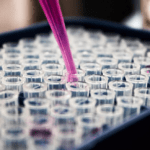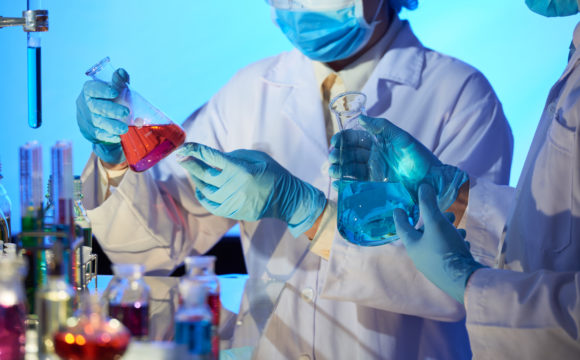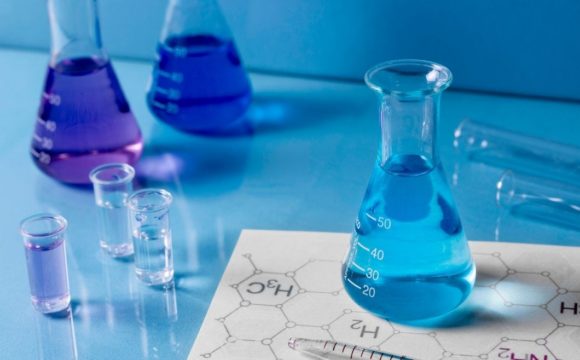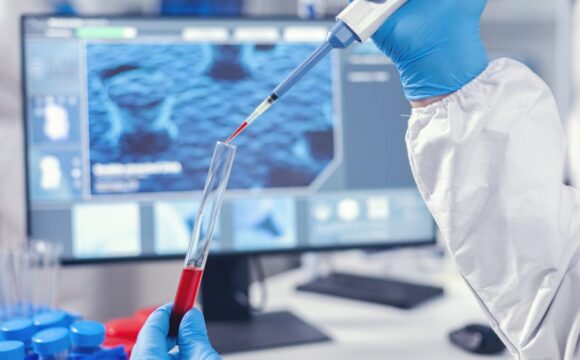Many years ago, in 1983, a scientist called Kary Mullis was trying out several ideas to amplify DNA for studying mutations. Today, almost 40 years later, we know one of his brightest ideas as the Polymerase Chain Reaction. For this ground-breaking discovery, Mullis received the Nobel Prize and ever since, the technique has been one of the most important tools in research and diagnostics. Over the years, it has also seen several modifications and improvements, making it even more powerful than Mullis’ initial design. One such modification is the Real Time PCR, which has made DNA quantification easier and more accessible and has greatly contributed to our understanding of various fields of biology.
PCR is a technique which is used to make multiple copies of DNA. It uses a special thermostable DNA polymerase (like the Taq DNA polymerase) which synthesizes new strands of DNA using the original DNA as a substrate. The following diagram shows all the components required for a standard PCR reaction:

Each step of the PCR requires a particular temperature. The image below shows the three steps of the PCR reaction – DNA denaturation, primer annealing and primer extension, and the temperatures required at each stage. Each cycle, consisting of these steps is repeated multiple times to obtain a large number of copies of the DNA.
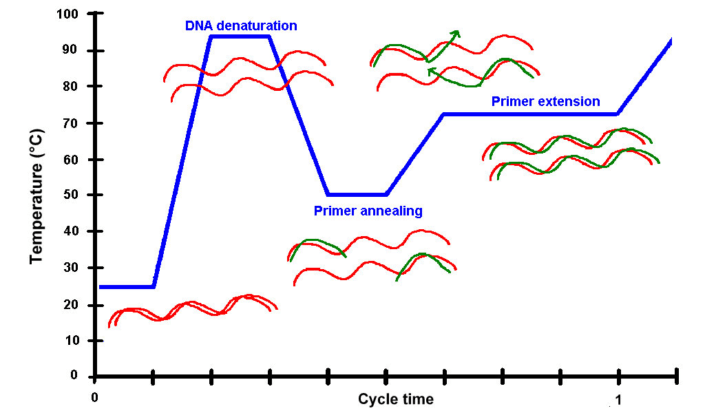
While this technique is extremely useful, one of its biggest drawbacks is the fact that it cannot be used to quantify the expression of a particular gene. This drawback was what led to the discovery of the Real Time PCR or Quantitative PCR (qPCR).
Real Time PCR
In 1993, Higuchi et.al., put forward the idea of incorporating a fluorescent DNA binding dye into the PCR reaction mixture. Thus, as the PCR amplification takes place, the dye would bind to the double stranded DNA copies and the fluorescence emitted could be used to quantify the DNA. This was the basis behind the technology of Real Time PCR. After its initial discovery, it has undergone several modifications. There are two main types of real time PCR based on the types of detection used – Fluorescent dye based real time PCR and DNA probe based real time PCR.
Fluorescent dye based real time PCR
In this technique, a fluorescent dye, such as SYBR®️ green, is used which binds to the DNA non-specifically. These dyes have an inherent background fluorescence even when not bound to DNA. But once the dye binds to DNA, the fluorescence intensity increases many folds and the increase in intensity is monitored and quantified. Non-specificity is a drawback of this type of real time PCR. The specificity of the reaction solely depends on the specificity of the primers used.

Probe based Real Time PCR
A probe is a short, known sequence of nucleotides which are complementary to a particular sequence on the target gene. For real time PCR, these probes are tagged or conjugated with radioisotopes or fluorochromes. During the PCR, these probes specifically bind to target regions on the gene of interest and emit a quantifiable fluorescence. The TaqMan probe is one the most widely used DNA probes in Real Time PCR. It contains a fluorophore at the 5’ end and a quencher at the 3’ end. When unbound, the quencher “quenches” the fluorescence of the probe. Once the probe specifically binds to a target on the DNA, DNA polymerisation begins using Taq DNA Polymerase. Taq DNA polymerase also has a 3’ to 5’ exonuclease activity and hence, as the polymerization progresses, it removes the quencher from the 3’ end of the probe. The free fluorophore on the probe now emits a fluorescence which is easily quantifiable. This method is much more specific than the dye based-real time PCR.

Various modifications of this basic technology is now available in the form of molecular beacons, LUX PCR primers, dual hybridization probes.
The working of the Real Time PCR

The Real Time PCR also follows the same three steps of the conventional PCR – denaturation, annealing and extension, each cycle repeating several times. It also requires a thermal cycler to maintain the appropriate temperatures at various stages. Currently several companies are providing thermal cyclers coupled with fluorescence detectors and analysers which provide the DNA amplification data and other quantifiable data.

The graph given above is the typical data which is obtained at the end of the Real Time PCR. The red line shows the amplification of the target DNA over the cycles (represented on the X-axis).
- In the initial cycles, the number of copies of the target is too low for the detection of fluorescence and this phase is denoted as the baseline phase.
- Once the number of copies crosses a certain level (the threshold), the fluorescence reaches the exponential phase.
- The Ct value is one of the most important data which is derived from the Real Time PCR. This value denotes the cycle number at which the fluorescence crosses the threshold and reaches the exponential phase.
How can we use the Ct value? Imagine that you are analyzing the expression of two genes – one with a low copy number and one with a high copy number. The gene with the high copy number will take a lesser number of cycles to cross the baseline fluorescence and will hence have a lower Ct value. On the other hand, the gene with a low copy number will have a higher Ct value. This kind of comparison can be very useful in genetics, diagnostics, molecular biology and several other fields.
The figure given below shows a few applications of Real Time PCR:

PCR is an evolving technique. Over the years of its use and applications, scientists have been making changes to make it more effective, simpler and faster. For example, the digital PCR is a new and improved format of the qPCR. But it cannot be denied that Real Time PCR is one of the most powerful tools that we currently have in research. It has contributed to several important discoveries and is an indispensable part of molecular biology and genetics.
References:
- https://microbenotes.com/real-time-pcr-principle-process-markers-advantages-applications/
- https://www.britannica.com/science/polymerase-chain-reaction
- https://blog.labtag.com/a-brief-history-of-pcr-and-its-derivatives/
- https://www.sigmaaldrich.com/technical-documents/articles/biology/pcr-introduction-and-historical-timelines.html
- https://bitesizebio.com/19728/the-history-of-pcr/
- https://www.biosistemika.com/blog/qpcr-technology-basics/
- https://www.bio-rad.com/en-in/applications-technologies/what-real-time-pcr-qpcr?ID=LUSO4W8UU
- https://bitesizebio.com/29508/real-time-pcr-digest/
- https://geneticeducation.co.in/dna-probes-labelling-types-and-uses/
- https://www.bio-rad.com/en-in/applications-technologies/introduction-pcr-primer-probe-chemistries?ID=LUSOJW3Q3
- https://microbenotes.com/real-time-pcr-principle-process-markers-advantages-applications/
- https://bitesizebio.com/19238/what-is-digital-pcr/





